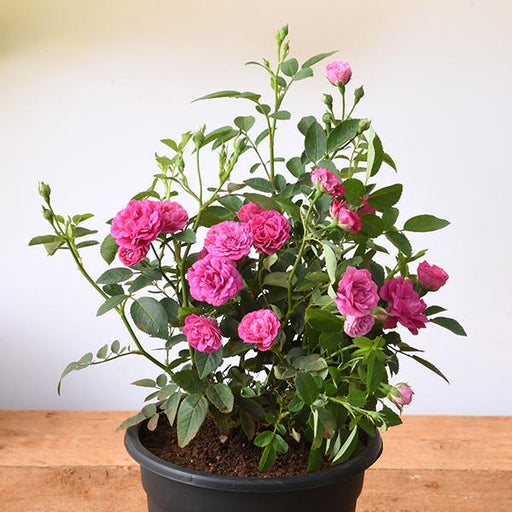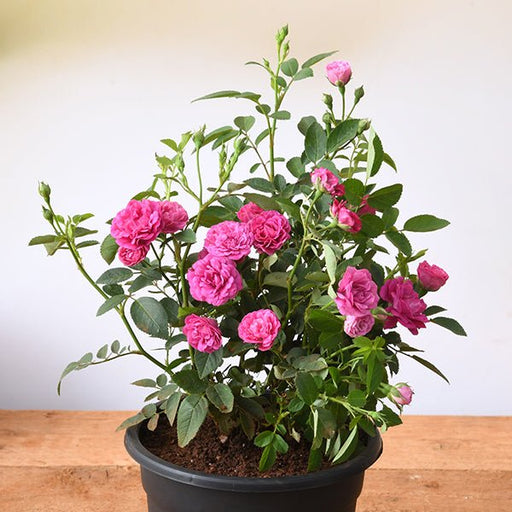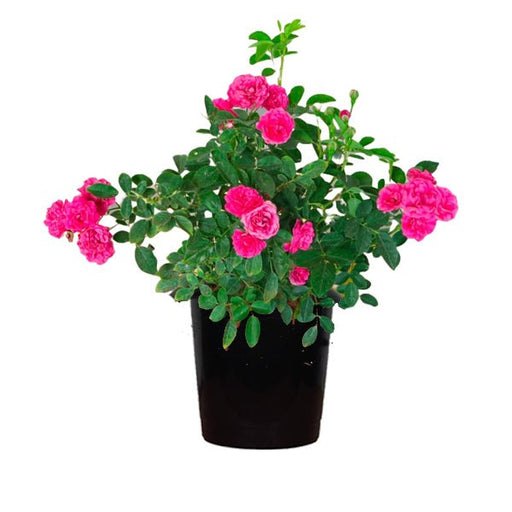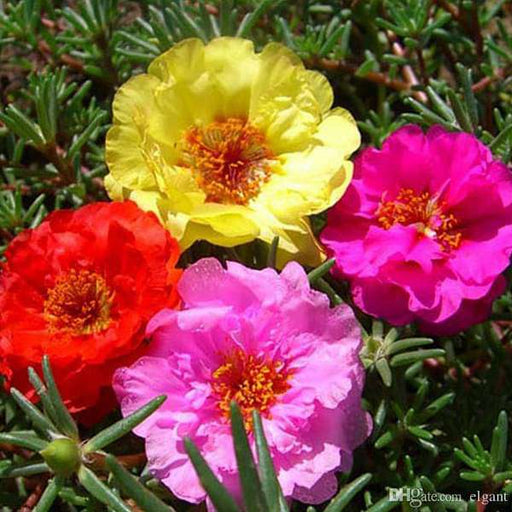
Agave lophantha, Ghaypat - Succulent Plant
(MRP Inclusive of all taxes)
- Shipping ₹79 for entire order
- Dispatch in 7 days
- Country of origin: India

(MRP Inclusive of all taxes)

 Save 25%
Save 25%
Miniature Rose, Button Rose (Any Color) - Plant The Miniature Rose, also known as the Button Rose, is a charming and compact flowering plant that ...
View full details
 Save 25%
Save 25%
Miniature Rose, Button Rose (Pink) - Plant The Miniature Rose, also known as the Button Rose, is a charming and compact flowering plant that bring...
View full details
 Save 25%
Save 25%
Rose (Red) - Plant The Red Rose (Rosa rubiginosa) is a timeless symbol of love and passion, renowned for its stunning blooms and enchanting fragra...
View full details
 Save up to 20%
Save up to 20%
Areca Palm (Small) - Plant The Areca Palm, scientifically known as Dypsis lutescens, is a stunning indoor plant that brings a touch of tropical el...
View full details Save 17%
Save 17%
Portulaca, 9 O'Clock (Any Color) - Plant The Portulaca, commonly known as 9 O'Clock, is a vibrant, succulent flowering plant that thrives ...
View full details Save 20%
Save 20%
Adenium Plant, Desert Rose (Grafted, Any Color) The Adenium, commonly known as the Desert Rose, is a stunning succulent that captivates wi...
View full details Save 25%
Save 25%
Hibiscus, Gudhal Flower (Red Double) - Plant The Hibiscus, also known as Gudhal Flower, is a stunning ornamental plant that boasts vibrant...
View full details Save 15%
Save 15%
Pack of Vermicompost and Neem Cake for House Plants Transform your indoor garden with our premium Pack of Vermicompost and Neem Cake, spec...
View full details
Pack of Plant Growth and Flower Boosters Unlock the full potential of your garden with our Pack of Plant Growth and Flower Boosters! This ...
View full details Save 38%
Save 38%
Combo of Jeevamrut and Neem Raksha for Easy Growth and Protection of Houseplants Transform your indoor garden with our exclusive combo of ...
View full details Save 22%
Save 22%
Plant Nutrients Kit (Pack of 16) for a Healthy Garden Transform your garden into a lush paradise with our Plant Nutrients Kit, featuring 1...
View full details Save 16%
Save 16%
Combo of Top Plant Fertilizers Elevate your gardening game with our exclusive Combo of Top Plant Fertilizers, featuring two bags of premiu...
View full details Save 24%
Save 24%
Pack of 4 Additives to Make Soil Healthy and Nutrient Rich Transform your garden into a thriving ecosystem with our Pack of 4 Additives de...
View full details Save 30%
Save 30%
Transform your gardening experience with our premium Combo of Perlite and Vermiculite. This unique blend is designed to enhance soil aeration and ...
View full details Save 27%
Save 27%
Combo of 2 Vermicompost and Cocopeat - Enrich Your Soil Naturally! Transform your garden into a thriving ecosystem with our Combo of 2 Ver...
View full details
 Save 35%
Save 35%
Best 6 Plants for Perfect Indoor Garden Transform your living space into a lush oasis with our curated collection of the Best 6 Plants for a...
View full details
 Save up to 50%
Save up to 50%
Mini Succulent Garden Pack Transform your space with our Mini Succulent Garden Pack, featuring a delightful collection of 4 any variety beautiful s...
View full details
 Save 30%
Save 30%
5 Best Fragrant Plants Transform your garden or indoor space into a fragrant paradise with our curated selection of the 5 Best Fragrant Plants. Th...
View full details
 Save 24%
Save 24%
Set of 2 Bonsai Looking Grafted Adeniums Transform your indoor or outdoor space with our exquisite Set of 2 Bonsai Looking Grafted Adenium...
View full details Save 45%
Save 45%
Top 4 Die Hard Succulents Pack Transform your indoor or outdoor space with our Top 4 Die Hard Succulents Pack, featuring a curated selecti...
View full details
 Save 30%
Save 30%
5 Best Indoor Plants Pack Transform your living space into a lush oasis with our '5 Best Indoor Plants Pack.' This carefully curated collection fe...
View full details
 Save 25%
Save 25%
Set of 4 Evergreen Air Purifier Plant Pack Transform your indoor space into a lush, green oasis with our Set of 4 Evergreen Air Purifier Pla...
View full details| SrNo | Item Name | Qty |
|---|---|---|
| 2 | Agave lophantha, Ghaypat Succulent Plant in 4 inch (10 cm) Pot | 1 |
Agave lophantha, commonly known as Ghaypat, is a stunning succulent native to Mexico. This hardy plant features rosettes of narrow, spiky leaves that are beautifully adorned with creamy-yellow margins. Ghaypat is not only visually striking but also drought-resistant, making it an ideal choice for xeriscaping and low-maintenance gardens. Its unique appearance and resilience make it a favorite among succulent enthusiasts and collectors alike.
What sets Agave lophantha apart is its remarkable adaptability to various environments. This succulent thrives in arid conditions, showcasing its ability to store water efficiently. Additionally, it produces tall flower spikes that can reach up to 6 feet, adorned with vibrant yellow flowers that attract pollinators, adding a splash of color to any garden.
Agave lophantha is not just a pretty face; it plays a vital role in its ecosystem. Its deep roots help prevent soil erosion, while its flowers provide nectar for bees and other pollinators. This plant is also known for its medicinal properties, historically used by indigenous cultures for various ailments.
Agave lophantha contributes positively to the environment by improving soil health and providing habitat for various wildlife. Its drought-resistant nature makes it an excellent choice for sustainable gardening practices, helping to conserve water in arid regions.
If you think caring for Agave lophantha is like raising a cactus in a bubble, think again! This succulent diva thrives on neglect, so feel free to give it the cold shoulder. Just remember, it loves well-draining soil and a sunny spot to bask in. Water it like you’re giving a sip to a cactus at a desert party—just a little, and only when it’s thirsty.
The Ghaypat, or Agave lophantha, isn’t just a pretty face; it’s a multitasking marvel! This succulent can purify the air, making your home feel like a fresh desert breeze. Plus, its striking rosettes are a conversation starter, ensuring your guests will be too busy admiring it to notice the dust bunnies lurking in the corners.
Propagating Agave lophantha is like playing matchmaker for plants. You can take offsets or pups and give them a new home. Just snip them off, let them callous over, and plant them in their own cozy pot. Before you know it, you’ll have a succulent family reunion, and who doesn’t love a good family gathering?
Caring for succulents is like hosting a low-maintenance party—keep it simple! Ensure they have bright light, minimal water, and a well-draining pot. Avoid overzealous watering; these plants prefer to sip rather than guzzle. With the right care, your Agave lophantha will thrive, and you’ll be the proud parent of a succulent superstar.
Size matters, especially when it comes to Agave lophantha! This succulent can grow up to 2 feet wide, making it a statement piece in any garden. It’s like the gentle giant of the succulent world—impressive but not overwhelming. Just make sure you give it enough space to spread its leaves and show off its beauty.
When Agave lophantha decides to bloom, it’s like throwing a party in your garden! Its tall flower stalks can reach up to 10 feet, adorned with yellow-green flowers that attract pollinators. But don’t get too attached; this plant is a one-hit wonder, blooming only once in its lifetime before it takes a well-deserved rest.
The Ghaypat plant isn’t just a pretty decoration; it’s a versatile wonder! Traditionally, its fibers have been used for making ropes and textiles. So, while it’s busy looking fabulous in your garden, it’s also got a history of being useful. Talk about a plant with a resume!
Native to the rugged terrains of Mexico, Agave lophantha is a tough cookie! It thrives in rocky, well-drained soils and can handle drought like a pro. This plant is the ultimate survivor, proving that beauty can flourish even in the harshest conditions. It’s like the rugged individualist of the succulent world.
Designing a succulent garden with Agave lophantha is like creating a masterpiece with nature’s finest art supplies. Mix and match different textures and colors to create a stunning visual display. Use gravel or stones for a desert vibe, and let your creativity run wild. Your garden will be the envy of all the neighborhood plants!
While Agave lophantha is generally pest-resistant, it’s not entirely immune to the occasional uninvited guest. Watch out for mealybugs and aphids; they can be as annoying as a fly at a picnic. A quick spray of insecticidal soap or a gentle wipe with a cloth can send them packing, ensuring your succulent remains the belle of the ball.
The Ghaypat plant symbolizes resilience and strength, much like that friend who always bounces back from life’s curveballs. In many cultures, it represents endurance and the ability to thrive in adversity. So, when you gaze at your Agave lophantha, remember it’s not just a plant; it’s a reminder to stand tall and flourish, no matter the circumstances.
Agave lophantha, affectionately known as Ghaypat, is a succulent superstar from Mexico. With its rosette of spiky leaves and striking colors, it’s like nature’s own architectural marvel. Perfect for those who want a low-maintenance plant that looks fabulous without demanding a social life!
Caring for Ghaypat is a breeze! Just give it well-draining soil, plenty of sunlight, and a sprinkle of water when it’s thirsty. Think of it as a cactus with a flair for the dramatic—no need for constant attention, just a little love now and then!
Absolutely! Ghaypat is the ultimate drought diva. This succulent thrives on neglect, making it perfect for forgetful plant parents. Just remember, less is more—overwatering is the only thing that can turn this tough plant into a soggy mess!
Yes, you can! Ghaypat loves to strut its stuff indoors, provided it gets enough sunlight. Place it near a bright window, and it’ll be the star of your indoor jungle. Just don’t forget to give it a little space; it likes to spread its spiky arms!
Ghaypat is pretty pest-resistant, but watch out for mealybugs and aphids trying to crash the party. If they show up, a gentle spray of water or a dab of insecticidal soap will send them packing. Your succulent deserves a pest-free life!
Water Ghaypat only when the soil is completely dry—think of it as a desert vacation! Typically, every 2-3 weeks is sufficient, but always check first. Overwatering is like giving it a surprise pool party it never wanted!
Ghaypat loves warm weather, thriving in temperatures between 70°F to 90°F. It can handle a bit of chill, but don’t let it freeze—this succulent isn’t a fan of winter wonderlands. Keep it cozy, and it’ll reward you with stunning growth!
Yes, indeed! Propagating Ghaypat is like starting a succulent family. You can do it through offsets or leaf cuttings. Just ensure the cuttings dry out for a day before planting them in soil. Soon, you’ll have a mini Ghaypat army!
Good news for pet parents! Ghaypat is generally non-toxic to cats and dogs. However, those spiky leaves can be a bit prickly, so keep an eye on curious paws. It’s a plant that’s more about looks than cuddles!
Ghaypat is a long-lived succulent, often thriving for decades with the right care. It’s like the tortoise of the plant world—slow and steady wins the race! With a little TLC, you’ll have a loyal companion for years to come.
Ghaypat blooms infrequently, usually after several years of growth. When it finally decides to show off, expect a tall flower spike adorned with yellow blooms. It’s like a surprise party—worth the wait, but don’t hold your breath!
You can find Ghaypat at local nurseries, garden centers, or online plant shops. Just make sure to choose a reputable seller to ensure you get a healthy plant. Your succulent collection will thank you for this fabulous addition!